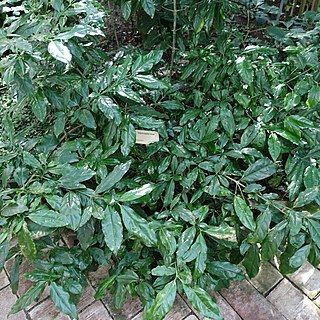Ovary unilocular with 2 opposing parietal placentas or sometimes ± joined to form a c. 2-locular ovary; style expanded into a massive, pithy, club-shaped pollen presenter, with 2 apical stigmatic lips.
Erect or scrambling entirely glabrous shrubs (except for inside the corolla tube) with some lateral branches modified into spines which are supra-axillary and held at right angles.
Flowers rather large, hermaphrodite, 5-merous, solitary in supra-axillary pairs, sometimes unilaterally subterminal; pedicels well developed.
Corolla tube funnel-shaped, strongly nerved in the midpetaline axes, pilose inside, glabrous outside; lobes contorted to the left.
Seeds 8–16 per fruit, lenticular, about 10 mm wide, embedded in a white tissue and forming a compact mass.
Leaves opposite, petiolate; stipules slightly connate at the base, acute or acuminate-subulate.
Calyx tube cylindric; limb very shortly tubular with 5 small erect or leaf-like lobes.
Fruit globose or ellipsoid with thin walls, crowned with the persistent calyx limb.
Anthers sessile, included; pollen grains simple.

